Essentials of CNC Milling:
A User-Friendly Guide

What is CNC milling?
CNC milling, short for Computer Numerical Control milling, is a highly versatile machining process that utilizes computerized controls and rotating multi-point cutting tools to precisely remove material from a workpiece. This advanced manufacturing technique has revolutionized the way components and parts are produced, offering unparalleled precision and efficiency.
In CNC milling, a computer-aided design (CAD) model is translated into a series of instructions that guide the milling machine's movements. The machine's cutting tools can move along multiple axes, allowing for the creation of intricate and complex shapes. This level of automation and precision makes CNC milling a cornerstone in various industries, from aerospace and automotive to healthcare and beyond.
What are 3-,4- and 5-axis milling machines?
CNC milling machines come in different configurations based on the number of axes they operate along. These axes represent the directions in which the cutting tool or the workpiece can move. Here's a breakdown of 3-, 4-, and 5-axis milling machines:
3-Axis Milling Machines:
Movement: X, Y, and Z axes.
Description: Traditional and widely used, these machines operate in three directions, making them suitable for relatively simple and flat surfaces.
4-Axis Milling Machines:
Movement: X, Y, Z axes, plus an additional rotary axis (usually the A-axis).
Description: Introducing a rotary axis allows for more flexibility, enabling the machine to create inclined surfaces and produce more complex geometries.
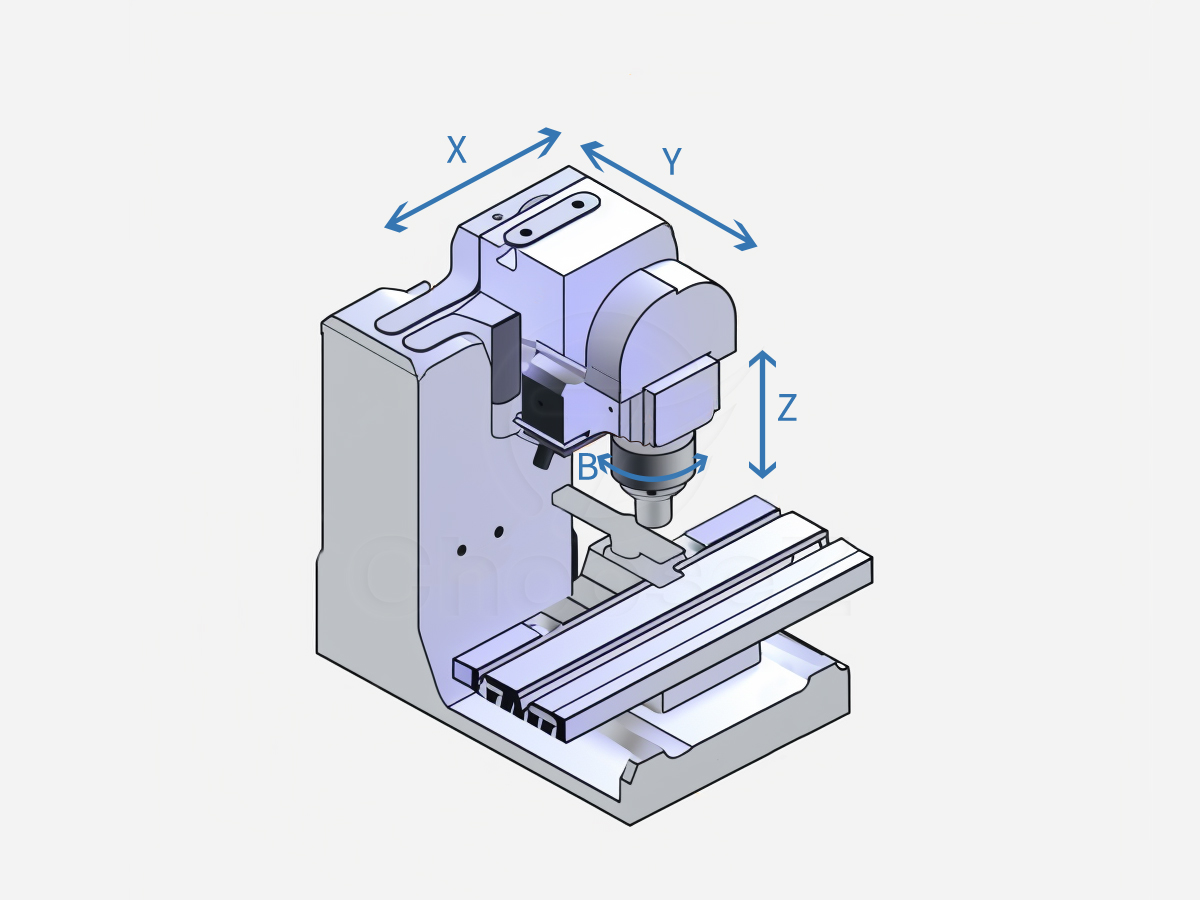
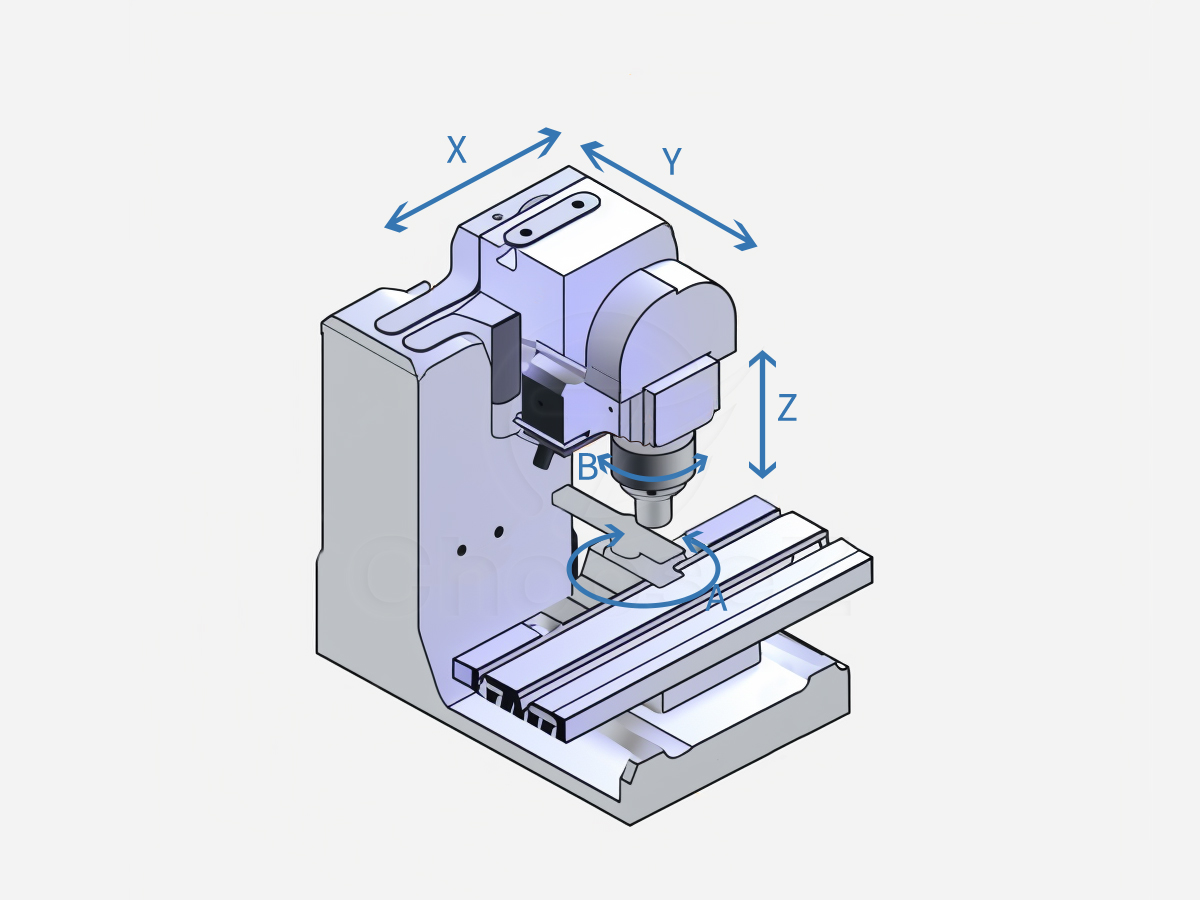
5-Axis Milling Machines:
Movement: X, Y, Z axes, plus two additional rotary axes (A and B).
Description: The pinnacle of versatility, 5-axis machines can manipulate the cutting tool or the workpiece in five directions. This capability allows for intricate and multi-sided machining, making them ideal for complex components in industries like aerospace and medical.
In summary, the number of axes determines the complexity of the milling machine's movements, with each additional axis providing increased flexibility for handling intricate designs and challenging geometries.
CNC Milling Machine Components
A CNC milling machine is a complex piece of equipment composed of several key components that work in harmony to execute precision machining tasks. Understanding these components is crucial for gaining insights into the machine's functionality. Here are the primary components of a CNC milling machine:
Machine Interface:The user interacts with the machine through a user-friendly interface, enabling the input of commands, program execution, and monitoring of the machining process.
Column:The vertical support structure of the machine, providing stability and support for other components.
Knee:The knee is a vertically adjustable component that supports the saddle and table, allowing for adjustments in the vertical position.
Saddle:The saddle is mounted on the knee and provides horizontal movement, supporting the worktable.
Worktable:The worktable is the surface where the workpiece is securely clamped during the machining process. It can move in both longitudinal and transverse directions.
Spindle:The spindle is a crucial component responsible for rotating the cutting tool. It can move up and down and may have various speed settings.
Arbor:The arbor holds the milling cutter and connects it to the spindle, allowing for efficient material removal.
Ram:The ram supports the upper portion of the milling head and can move in and out, providing additional flexibility in machining operations.
Machine Tool:The entire assembly, including the components mentioned above, constitutes the machine tool that performs precision milling operations.
Understanding the role of each component is fundamental to harnessing the full potential of CNC milling machines.

How Does a CNC Machine Work?
The operation of a CNC machine involves a systematic process that transforms a digital design into a physical object with precision and efficiency. Here's a step-by-step overview of how a CNC machine works:
Designing a CAD Model:The process begins with the creation of a Computer-Aided Design (CAD) model. Engineers and designers use specialized software to design a 3D representation of the desired object, specifying dimensions and features.
Converting the CAD Model into a CNC Program:The CAD model is then converted into a CNC program, which consists of a set of instructions that guide the machine on how to create the physical object. This involves translating the design into a language that the CNC machine understands, known as G-code.
Setting Up the CNC Milling Machine:Operators load the CNC program into the machine's computer and secure the workpiece onto the worktable. Proper alignment and calibration are crucial during this setup phase to ensure accurate machining.
Executing the Milling Operation:With the CNC program loaded and the workpiece in place, the machine begins the milling operation. The spindle rotates the cutting tool, and the machine precisely follows the instructions from the G-code, cutting away material to shape the final product.
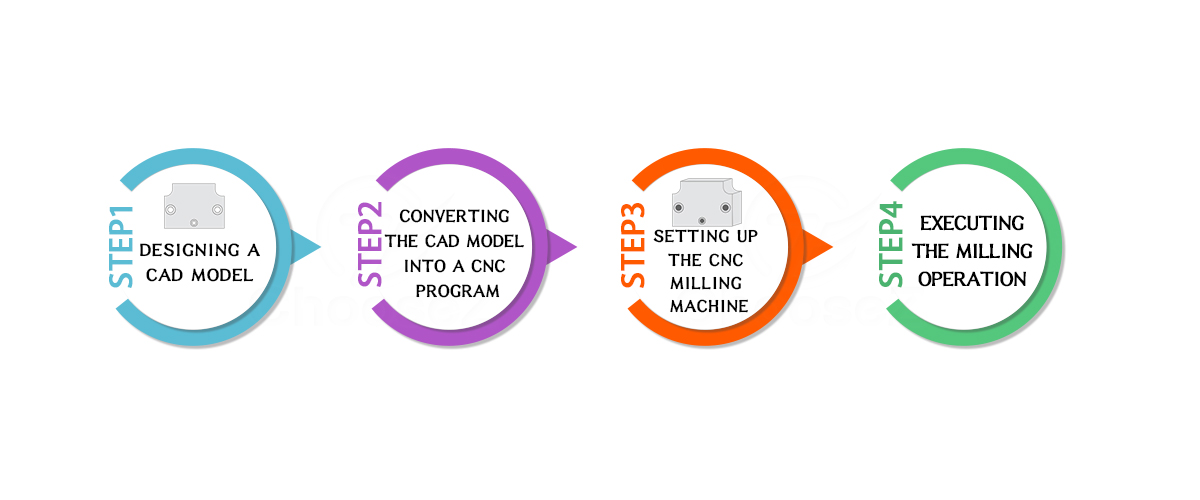
Types of CNC Milling Operations
CNC milling offers a versatile array of operations to achieve various shapes, dimensions, and surface finishes. Here are some fundamental types of CNC milling operations:
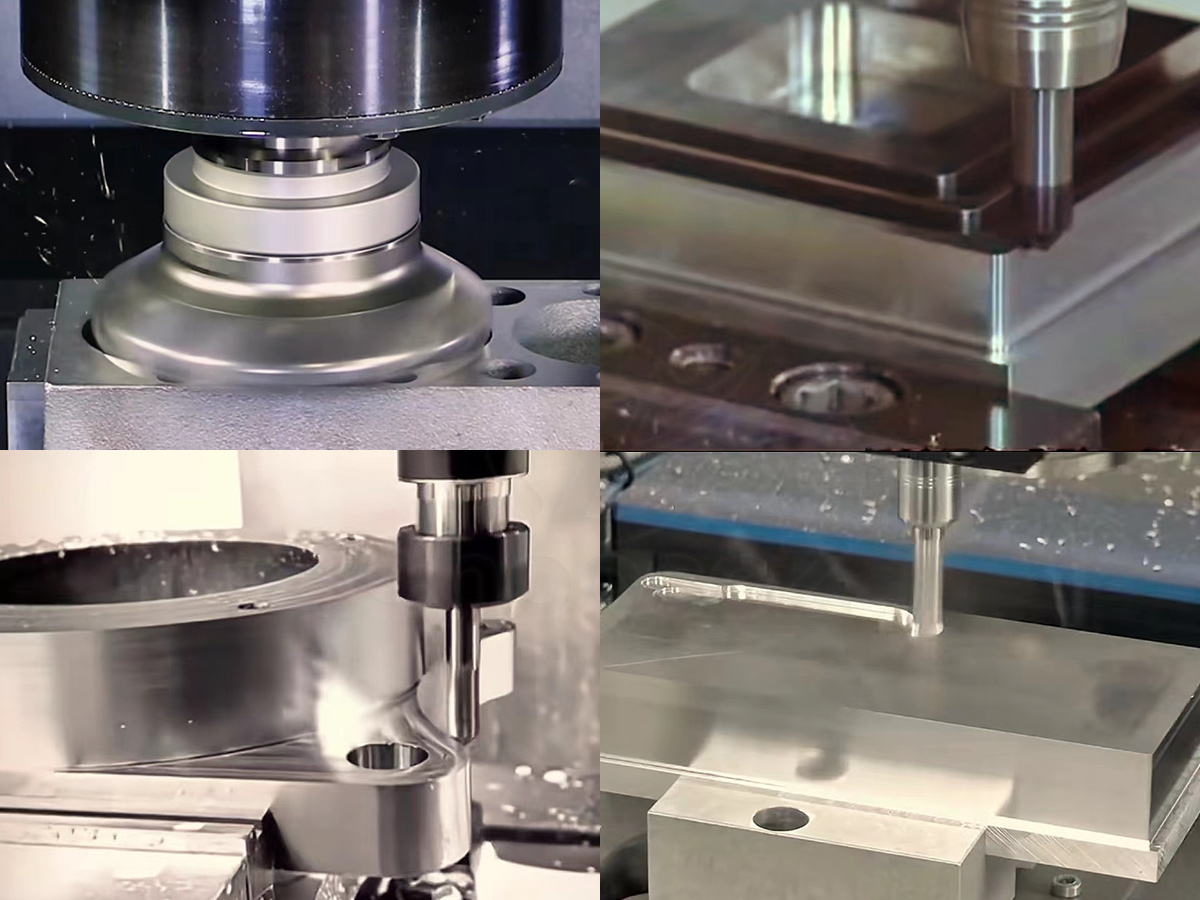
Face Milling:
In face milling, the cutting tool removes material from the workpiece's face, creating a flat surface. This operation ensures smooth finishes and precise dimensions.
Plain Milling:
Plain milling involves using a milling cutter to produce a flat surface parallel to the axis of rotation. It's a foundational operation suitable for creating flat or contoured surfaces.
Angular Milling:
Angular milling utilizes a milling cutter to create angled features on the workpiece. This operation is essential for producing bevels, chamfers, and other angular geometries.
Form Milling:
Form milling uses specialized cutters to shape the workpiece into intricate forms or contours. This operation is valuable for crafting complex and customized components.
Other Milling Machine Operations:
Straddle Milling:Straddle milling involves milling two parallel surfaces simultaneously. This is achieved by mounting two side-by-side cutters on the arbor and cutting both surfaces in one pass.
Gang Milling:Gang milling refers to using multiple cutters to perform different milling operations in a single setup. This approach enhances efficiency by completing several tasks in one pass.
Profile Milling:Profile milling is employed to create complex outlines and shapes on the workpiece. Precision is crucial in profile milling to achieve accurate contours.
Gear Cutting:CNC milling machines can be equipped with special tools for gear cutting operations, enabling the production of gears with precise tooth profiles and spacing.
Other Machining Processes:
Beyond traditional milling operations, CNC machines can integrate various machining processes like drilling, tapping, and reaming. This flexibility allows for the creation of intricate parts with diverse features, making CNC milling a cornerstone in modern manufacturing.
Types of Milling Machines
Milling machines come in various types, each designed for specific applications. Understanding the different types helps in selecting the most suitable machine for a particular machining task. Here are some common types of milling machines:
Ram-Type Milling Machine:
The ram-type milling machine features a spindle mounted on a movable housing (ram). This design allows for both horizontal and vertical milling operations, offering versatility in machining.
Knee-Type Milling Machine:
Knee-type milling machines have a vertically adjustable worktable resting on a saddle supported by a knee. This configuration is ideal for versatile milling operations and is a popular choice for many workshops.
Planner-Type Milling Machine:
Planner-type milling machines are large and heavy-duty. They are designed for machining large surfaces and workpieces, making them suitable for heavy industrial applications.
Bed-Type Milling Machine:
Bed-type milling machines have a stationary worktable, and the spindle moves along the bed in a perpendicular direction. These machines provide high rigidity and precision, making them suitable for large-scale production.
Understanding the specific features and advantages of each type of milling machine enables manufacturers to make informed decisions based on their machining requirements and production goals.
Milling Machine Considerations
Choosing the right milling machine involves careful consideration of various factors, ensuring optimal performance and efficiency in machining processes. Here are essential aspects to weigh:
Types of Milling Machines:
Different projects demand specific machine types. Understanding the nuances of ram-type, knee-type, planner-type, and bed-type milling machines enables manufacturers to select the most fitting option based on their machining requirements.
Material Considerations:
The material being machined plays a pivotal role. Different milling machines are better suited for specific materials. Manufacturers must consider the material's hardness, density, and other properties to ensure precise and efficient milling.
Precision Requirements:
Assessing the level of precision needed in the machining process is crucial. For intricate and detailed work, machines with higher precision capabilities may be necessary. Manufacturers must align the precision requirements with the capabilities of the chosen milling machine.
How much does CNC Milling cost?
The type of material being machined significantly influences costs. High-quality or specialized materials often come with a higher price tag. Additionally, the amount of material wasted during the milling process can impact expenses.
Machine Time and Labor Costs:
Machine Time:The duration the CNC milling machine operates directly affects costs. Longer machining times result in increased energy consumption and, subsequently, higher expenses.
Labor Costs:Skilled machinists are essential for programming, setting up, and monitoring CNC milling machines. Labor costs are influenced by the expertise required for a particular job.
Tooling Costs:
CNC milling involves various cutting tools that wear out over time. Tooling costs include the expense of purchasing, maintaining, and replacing these tools, impacting the overall budget.
Complexity of the Project:
More intricate projects with complex designs and tight tolerances may demand specialized tooling, longer machining times, and heightened precision. As a result, the complexity of the project plays a role in determining costs.
Machine Depreciation and Maintenance:
CNC milling machines have a lifespan, and their depreciation is factored into the overall costs. Regular maintenance also contributes to ensuring optimal machine performance but adds to the operational expenses.
Overheads and Miscellaneous Costs:
Overheads such as facility costs, utilities, and administrative expenses are part of the overall CNC milling cost calculation. Miscellaneous costs may include fees for certifications, quality inspections, and additional services.
Quantity of Parts:
Batch production can lead to economies of scale, reducing costs per unit. Larger production quantities may optimize machine time and material usage, resulting in a more cost-effective per-part price.
Quality Requirements:
Meeting stringent quality standards often involves additional processes, inspections, and precision. Higher quality requirements may incur additional costs.
Understanding these factors collectively contributes to a comprehensive assessment of CNC milling costs. It's crucial to collaborate closely with a machining service provider to obtain accurate quotes tailored to specific project requirements and budget constraints.
How to calculate the price of a CNC milling part?
Calculating the price of a CNC milling part involves considering various factors to ensure a comprehensive and accurate estimation. Mainly contains:
Material Cost:
Determine the material required for the part.Consider the cost of the raw material, factoring in the type (aluminum, steel, etc.) and quantity needed.
Machine Time:
Calculate the machine time required for milling. This includes setup, machining, and any secondary operations.Machine time is often billed per hour, so multiply the time by the machine's hourly rate.
Labor Costs:
Include labor costs associated with programming, setup, and machining.
Factor in the hourly rate of skilled machinists or operators involved in the process.
Tooling Costs:
Account for tooling costs, including the cost of end mills, drills, or any other tools needed for the specific job.
Consider the tool life and the number of tools needed for the entire production run.
Overhead Costs:
Include overhead costs such as facility expenses, utilities, and maintenance.
Overhead costs are often allocated based on machine hours or a similar metric.
Quality Control and Inspection:
Factor in costs associated with quality control and inspection processes to ensure the final part meets specifications.
Markup for Profit:
Add a markup percentage to cover profit margins and account for unforeseen expenses.
The markup may vary based on industry standards and business strategy.
Advantages/Limitations of CNC Milling
Advantages of CNC Milling:
Precision and Accuracy:CNC milling ensures exceptional precision, allowing for tight tolerances and accurate replication of designs. This level of precision is challenging to achieve consistently with manual machining.
Versatility:CNC milling machines can handle a wide range of materials, including metals, plastics, and composites. This versatility makes them suitable for diverse industries and applications.
Complex Geometries:The process excels at machining complex and intricate geometries that may be impractical or impossible with traditional methods. CNC milling is particularly beneficial for three-dimensional parts.
Repeatability and Consistency:CNC milling ensures high repeatability, producing identical parts with minimal variation. This consistency is crucial for mass production and maintaining quality standards.
Efficiency and Speed:CNC milling machines operate with high efficiency, reducing production time compared to manual machining. Automated tool changes and multitasking capabilities contribute to enhanced productivity.
Reduced Human Error:Automation minimizes the risk of human error associated with manual machining. CNC programs are precise and can be repeatedly executed without deviations.
Cost-Effective for Large Productions:Once programmed, CNC milling machines can efficiently produce large quantities of parts. This scalability often leads to cost savings for bulk production.
Limitations of CNC Milling:
Initial Setup Time:The programming and setup of CNC milling machines can be time-consuming, especially for complex parts. This initial setup time may impact the cost-effectiveness of small production runs.
High Initial Investment:Acquiring and maintaining CNC milling machines involves a significant upfront investment. Small businesses or those with limited production needs may find the initial cost prohibitive.
Skilled Operator Requirement:Skilled operators are essential for programming, setup, and monitoring CNC milling machines. Ensuring a proficient workforce adds to labor costs and training expenses.
Material Limitations:While CNC milling is versatile, some materials may pose challenges. High-hardness materials or those prone to chipping may require specialized tooling and expertise.
Maintenance and Downtime:Regular maintenance is crucial to keep CNC milling machines operating optimally. Unplanned downtime for maintenance or repairs can disrupt production schedules.
Environmental Impact:The production of CNC milling machines and the materials they use may have environmental implications. Consideration of sustainable practices is increasingly relevant.
Alternatives of CNC Milling
Manual Milling:
Traditional manual milling involves the use of manual milling machines operated by skilled machinists. While it provides a hands-on approach and is suitable for simple operations, it lacks the precision, speed, and automation offered by CNC milling.
3D Printing:
Rapid prototyping and additive manufacturing processes, such as 3D printing, present an alternative to CNC milling, especially for complex geometries. However, 3D printing may have limitations in material choices, surface finish, and production speed compared to CNC milling.
Waterjet Cutting:
Waterjet cutting utilizes a high-pressure jet of water mixed with an abrasive substance to cut through materials. While effective for softer materials and offering minimal heat-affected zones, it may not achieve the same precision as CNC milling, particularly for intricate details.
Wire EDM (Electrical Discharge Machining):
Wire EDM involves using electrical discharges to shape and cut materials. It is particularly effective for complex shapes and hardened materials but may lack the speed and material versatility of CNC milling.
Plasma Cutting:
Plasma cutting employs a high-velocity jet of ionized gas to cut through materials. It is suitable for thick metals but may not deliver the same level of precision as CNC milling, making it more applicable for certain industrial applications.
Laser Cutting:
Laser cutting uses a focused laser beam to cut through materials. While it offers speed and precision, the suitability depends on the material type and thickness. CNC milling may excel in achieving finer details and working with a broader range of materials.
Chemical Machining:
Chemical machining involves the selective removal of material using chemical etchants. It is suitable for intricate designs but may have limitations in material compatibility and environmental considerations.
Ultrasonic Machining:
Ultrasonic machining uses ultrasonic vibrations to remove material. While effective for hard and brittle materials, it may not match CNC milling's versatility, especially for softer materials and complex shapes.
Selecting the most appropriate machining method depends on factors such as material requirements, precision, production volume, and cost considerations. CNC milling remains a preferred choice for its balance of precision, versatility, and efficiency across various industries.
You Might also Like
View all →

CNC Milling Machine Operation: Ready to Master the Key Skills?
Read More →
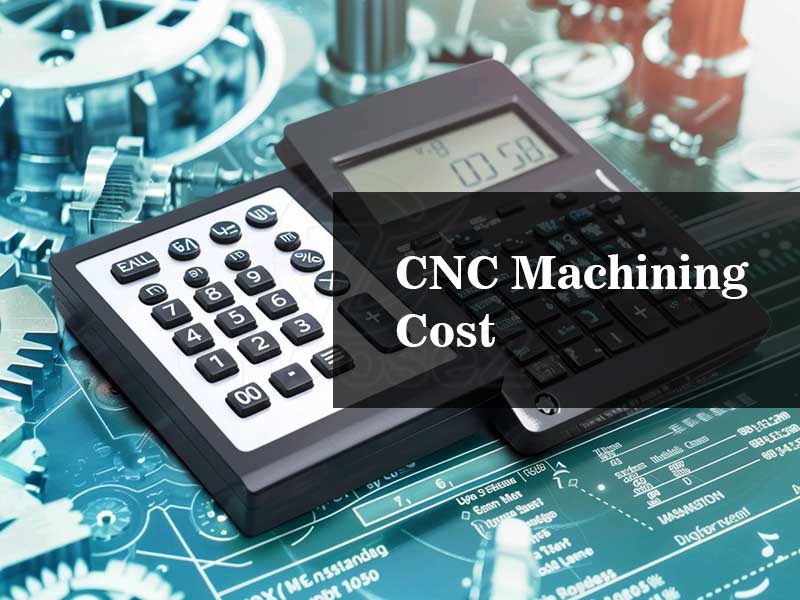
How Much Does CNC Machining Cost?
Read More →





